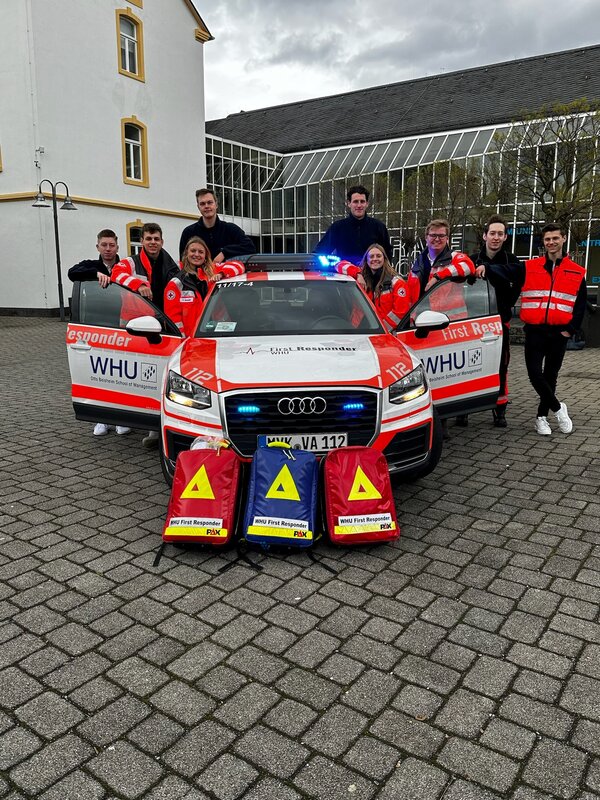Student-run organization WHU First Responder offers crucial and potentially life-saving assistance during medical emergencies
It’s two in the morning, and the app sounds the alarm. The alert is brief: “Fall. Elderly man. Located at...” The clock is ticking. 15 minutes. According to state regulations in Rhineland-Palatinate, that’s all the time emergency medical services have to arrive on the scene. But many towns lack adequate reach to such services, a reality recently confirmed through comprehensive data analysis conducted by the SWR and profiled in the ARD documentary Notfall Rettung – Wenn die Hilfe versagt.
Vallendar has no emergency medical service center of its own. But what happens then when one of its residents goes into cardiovascular arrest? That is when WHU First Responder, a student-run organization from WHU – Otto Beisheim School of Management, gets involved. “We are there to start administering first-aid,” says Philippa Nesseler.
The twenty-four-year-old, who is currently working toward her Bachelor in Business Administration, has been a first responder since 2022. During her time as chairperson last year, the organization, which works closely with DRK Ortsverein Niederwerth, celebrated its 20th anniversary.
It’s not uncommon for members of WHU First Responder to already be on the scene by the time paramedics arrive. Some nights, they only need to calm and reassure patients, collect their personal information, or treat simple wounds. Other nights, and in more serious situations, they may even need to resuscitate. “The alarm has gone off a lot over the past few weeks,” says Nesseler. That’s not uncommon during a summer heatwave. “Older people tend not to hydrate enough, for example. And sometimes we get calls coming in from the local pool when a small child takes a tumble.”
All members of WHU’s First Responder team have the app installed on their phones. If the alarm goes off, they are all notified no matter when or where—day or night, during exams, during their lunch breaks. A typical week sees the team take on two to three cases. Members decide for themselves whether they are mentally fit to take on the calls that come in. “That freedom to choose is important to us. Everyone has their own limits, and we want to respect that,” says Nesseler.
Seven of the 26 first responders make use of the initiative’s own emergency vehicle, which has belonged to the organization since 2022. “We were able to buy out our rental contract through donations,” says Nesseler. The Audi Q2, lovingly referred to as “Lucie,” is equipped with the same crucial systems that ambulances have.
Nesseler herself had no prior experience before joining WHU First Responder. “I just thought it would be great to help out, give something back, and learn how to act in an emergency. After all, we can all find ourselves in a situation where somebody around us suddenly passes out or feels unwell.” Those who join the team are required to complete a first aid course from the German Red Cross and complete a ten-day training in the emergency vehicle before going out on calls.
Further information about WHU First Responder and how to join can be found here.

